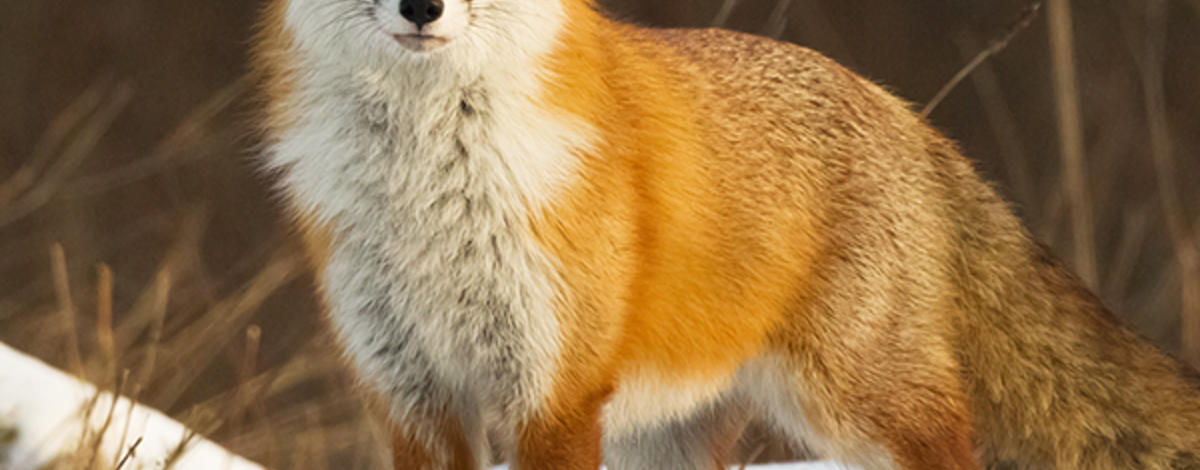He’s quick. He’s cunning. He’s red. And he’s racked up over a billion views on YouTube. Who is he? Take a peek at January’s Wildlife Express newsletter and learn almost everything about one of nature’s most clever critters, the red fox.
The cat-like canine of the woods is more than just the subject of an obnoxious viral Youtube video. Red foxes have been portrayed in different cultures for thousands of years, depicted as stealthy tricksters — in some legends, descendants of the sun — who steal fire and gift it to native peoples. This portrayal can be seen in countless stories and first-hand accounts throughout antiquity.

If you’ve ever come across a red fox in the wild, chances are that it spotted you well before you spotted it. Watching a fox tip-toe or bound through the timber is a mesmerizing, almost mystical experience. The pads of their tiny feet absorb any shred of noise as if walking atop a memory foam mattress.
Although they are members of the canine family, red foxes can possess, at times, feline characteristics. When stalking prey, a fox will crouch low to the ground, their Quidditch-broom tails hanging weightlessly in tow as they tilt their heads to pick up on nearly inaudible squeaks either below ground, or in tall grasses. A red fox’s hearing is so keen they can detect a mouse’s squeak from 50 yards away.

Like other members of the canine family, red foxes use scent glands located on various parts of their bodies to mark territories. Scent glands can be found at the anus, lips, jaws and paws. Red foxes will also communicate vocally with one another and have been recorded making 28 different sounds. (If you want to hear perhaps the most guttural, horrifying noise the woods can produce, go camp alone in range of a shrieking female fox, or vixen, and try to get a wink of sleep.)
Despite their name, red foxes come in more color variations than a pair of Air Jordans. Folks have documented red foxes having black, silver, brown, white or combinations of all of the above, throughout Idaho. Highly prized for this color variation in their rich fur, red foxes can be hunted and are targeted by trappers during the winter trapping season.

Red Fox Facts
- Wild canines can be found on every continent except Antarctica.
- Red foxes are omnivorous and will eat everything from mice and birds to fruits and plants.
- A fox that has darker colored fur running across the shoulders and down the back (in the shape of a cross) is known as a cross fox.
- Despite coming in a whole palette of color combinations, red foxes are always called red foxes.
- Usually, red foxes only use a den to give birth and care for their young. The rest of the year, they curl up in a ball and place their tails over their bodies to stay warm.
- Red foxes breed in the winter, with kits being born in March or April.
- When they’re born, they weigh as much as 12 pencils.
- By 12 weeks, kits can leave the den and hunt on their own.
With such a wide geographic distribution, foxes have shown up in countless literary portrayals among different cultures. This month’s Wildlife Express newsletter recounts a few of these foxy fables, and takes a closer look at other members of the canine family. Check out Fish and Game’s Wildlife Express webpage to learn more.

